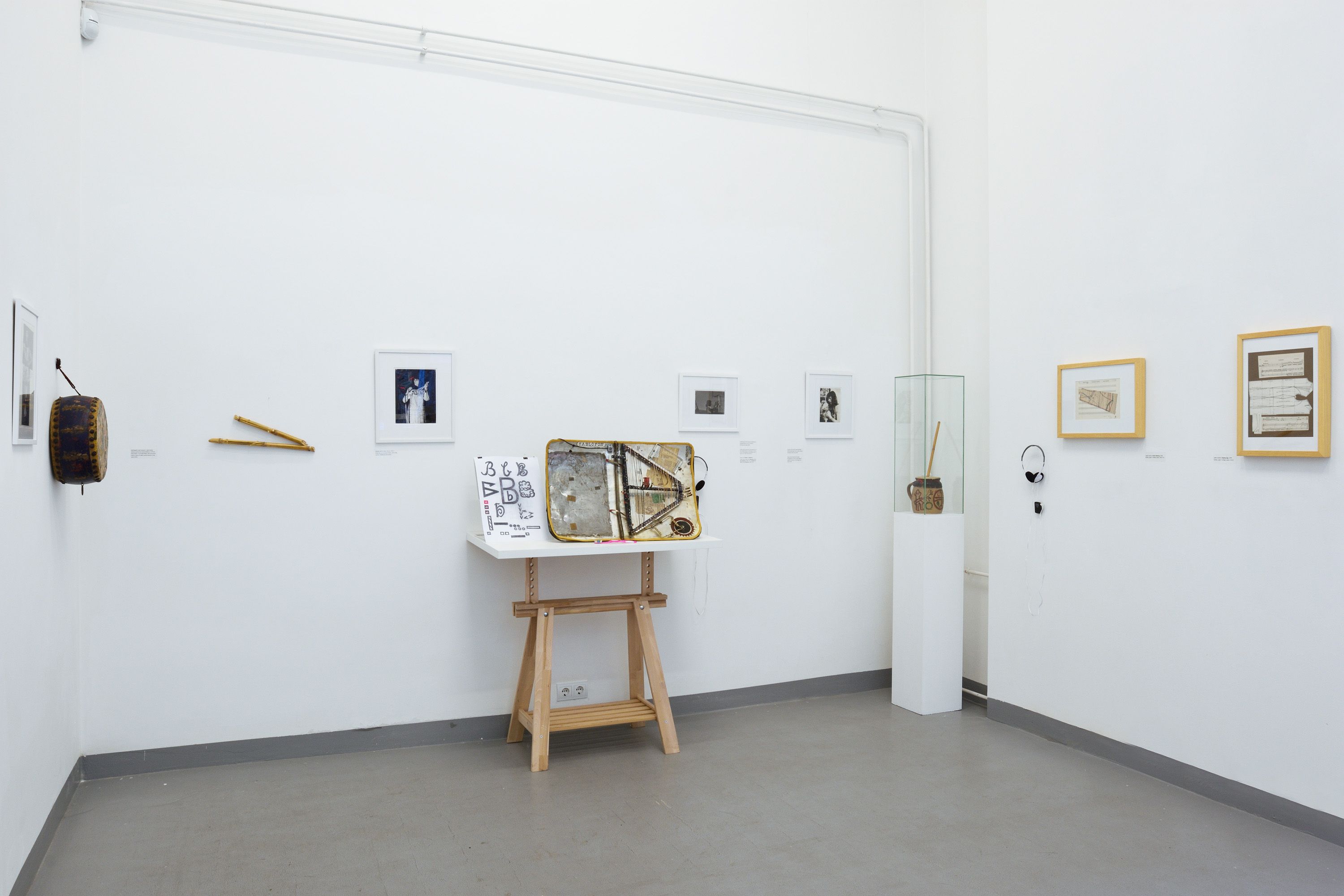Katalin Ladik
Hommage à Ernő Király
| Venue: | acb NA |
| Date: | Apr 23 – May 24, 2019 |
Description
The latest exhibition of Katalin Ladik commemorates Ernő Király on the centenary of his the birth. Often referred to as the John Cage of Vojvodina, the ethnic Hungarian composer, ethnographer and folklorist of Serbia was one of the key figures of new musical endeavours emerging from the middle of the 20th century within the region. His praxis fused avant-garde music with the colourful folklore traditions of the Balkans.
From 1964, he and Katalin Ladik were a couple in private life as well as at work. They continued their professional collaboration after their divorce in 1968. They took field trips collecting musical folklore together, which greatly influenced Ladik’s creative approach. In the course of these research trips she came close to the archaic musical traditions of different ethnic groups in Vojvodina, and elements of these inspired much of her future art. As a composer – similarly to some other representatives of the Yugoslav contemporary music scene – Ernő Király reflected on the practices of Cage and international avant-garde music from the early ‘60s, giving rise to a local reinterpretation of these. He had a predilection for modified instruments and various techniques of improvisation. His devices included aleatory and multi-instrumentalism; he developed several new instruments. To Katalin Ladik, the most important lesson to be learned from Király’s praxis as a composer and performer was his intermedia approach, which became a natural characteristic of Ladik’s work from the start of her career as an artist. Already her first book of poetry to be published in print (Ballad of the Silver Bicycle, 1969) was published with a phonograph record attachment containing the vocal interpretation of her poems, which were performed live at her poetry recitals, as a direct antecedent of her performance art. To Ernő Király, the woman 23 years younger than himself was more than a creative partner: her art served as a source of inspiration to him. Ladik’s texts comprised a point of departure for his musical compositions, and Ladik contributed to performing a number of Király’s pieces, exploiting her exceptional performative devices and extraordinary means of vocal expression, way beyond the diversity of a simple singing voice. Ladik’s visual scores had undeniable influence on the graphic scores Ernő Király used for the notation of many of his compositions.
The exhibition presents a selection of Katalin Ladik’s work inspired by Ernő Király’s art, as well as their co-authored works and documents of their collaboration.
The exhibition was supported by NKA.


